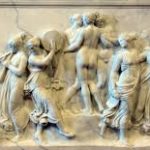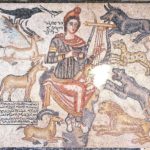Roman Dancing and Music: Roman culture was greatly influenced by the Greek traditions. Roman Dancing and Music are given much importance in Rome from the very ancient period. Initially, Roman dance was performed only on religious occasions. Most of these religious dance forms belonged to the Etruscan origin. However, gradually, dance was introduced in theaters. Bathyllus and Pylades were two very famous ancient dancers.
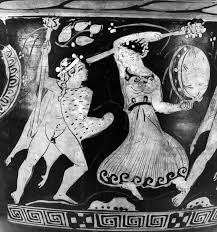
Ancient Roman Dancing and Music
There was a striking difference between the Etruscan and the Roman peoples in their approach to the dance. Little is known about the Etruscans, who populated the area north of Rome up to Florence and flourished between the 7th and 5th century BC. But it is apparent from their lavish tomb painting that dance played an important part in their enjoyment of life.
Women were enthusiastic participants in Etruscan dancing; funerary chain dances were performed by groups of women, and lively, energetic couple dances are portrayed in Etruscan frescoes. They were performed without masks in public places and showed a distinct courting character.
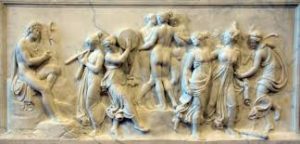
Roman antagonism to dance seemed to reflect a sober rationalism and realism. Nonetheless, Rome did not entirely evade the temptations of dance. Before about 200 BC, dances were evidently in the form of choral processions only.
Weapon Dances
There were agricultural processions headed by priests, and weapon dances of the Salii, a congregation of the priests of Mars who walked around in a circle while rhythmically beating their shields. Dancing was an important part of Roman festivals-the celebrations of Lupercalia and Saturnalia featured wild group dances that were precursors of the later European carnival.
Later, Greek and Etruscan influences began to spread, though people who danced were considered suspicious, effeminate, and even dangerous by the Roman nobility. One public official did not believe his eyes when he watched dozens of the daughters and sons of well-respected Roman patricians and citizens enjoying themselves in a dancing school.
About 150 BC all dancing schools were ordered closed, but the trend could not be stopped. And through dance may have been alien to Roman’s inner nature, dancers and dancing teachers were increasingly brought from abroad in the following years. The statesman and scholar Cicero summed up the general opinion of the Romans when he stated that no man danced unless he was insane.

Ancient Roman dance facts
A form of dance that enjoyed great popularity with the Romans under Emperor Augustus that was between 63 BC and 14 AD was the wordless, spectacular pantomime that rendered dramatic stories by means of stylized gestures. The performers, known as pantomime, were at first considered more or less as interpreters of a foreign language since they came from Greece.
They refined their art until the two dancer-mimes Bathyllus and Pylades became the star performers of Augustan Rome. The stylized performance of the dancer, who wore a mask appropriate to the theme of his dance, was accompanied by musicians playing flutes, horns, and percussion instruments and a chorus that sang about the action between dance episodes.
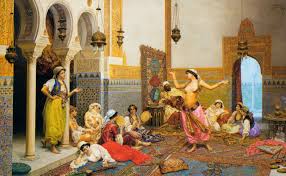
Ancient Rome allowed the foreign arts of music and dance to dominate their culture since Roman citizens considered performing on the stage beneath them. The ancient Roman dance to some extent like ballet, except for the fact that it was less dependent on musical accompaniment.
At first, it was a ritual ceremony and then passed to a theater. Tragic dance, as a matter of fact, precedes tragic drama. Dance had two elements: movement, which could be taught to anyone; and gesture, which was reserved for professional dancers.
More info on- music, Roman musical instruments
